American model Peggy Moffitt, who has died aged 84, joined forces with designer Rudi Gernreich to create a scandal in the 1960s fashion world, appearing in baby dresses, adult school uniforms and, most famously, revealing women’s swimwear that was condemned by police forces on the coast from Santa Monica to St Tropez.
The photograph of Peggy Moffitt in Gernreich’s “monokini,” taken by her photographer husband William (Bill) Claxton, symbolized the sexual revolution and liberation of the era. It was published in Women’s Wear Daily in 1964 and made international headlines. France banned the swimsuit; the Pope declared it immoral, and the Soviet government denounced it as a sign of “barbarity” and social “decay.” Peggy Moffitt received both marriage proposals and threats.
Gernreich designed the monokini as a statement against American puritanism and the taboos surrounding female nudity. Only about 3,000 of the topless swimsuits were ever produced; one, a gift from Gernreich himself, remained in Peggy Moffitt’s wardrobe with its garment worker’s tag still on it. She kept it as a tribute to their friendship, which lasted until Gernreich’s death from lung cancer in 1985.
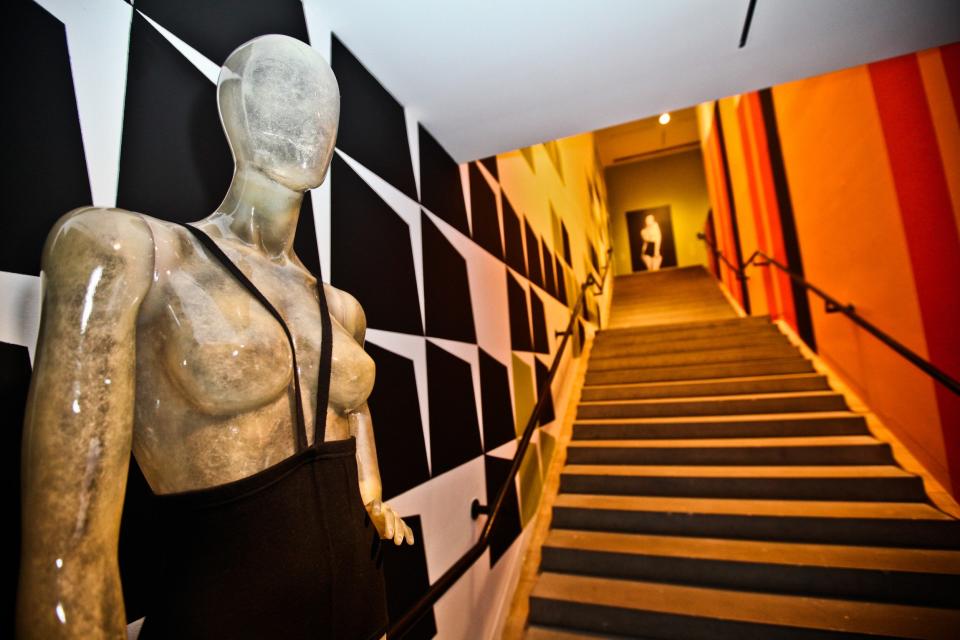
She later became a guardian of his legacy and a staunch defender against any perceived attempts to tarnish it through excessive prurience. She strongly opposed Los Angeles Fashion Group’s plans to use a topless model as part of a Gernreich retrospective, declaring the move “exploitative”.
Throughout their 20-year partnership, she never saw herself as the designer’s muse, but rather as his collaborator with an equal say in how an image was assembled and presented. She brought her experience in ballet, theatre and mime to each shoot, treating photography as “a perfectly white piece of paper” to be performed on.
Her runway shows were theatrical events, with basic dresses accessorized like stage costumes. While other models walked in the approved manner, she would go bow-legged and pigeon-toed when she felt the outfit called for it. “I would look for the inner life of the dress, and when I did a whole collection, I would figure out how to play each one,” she recalls.
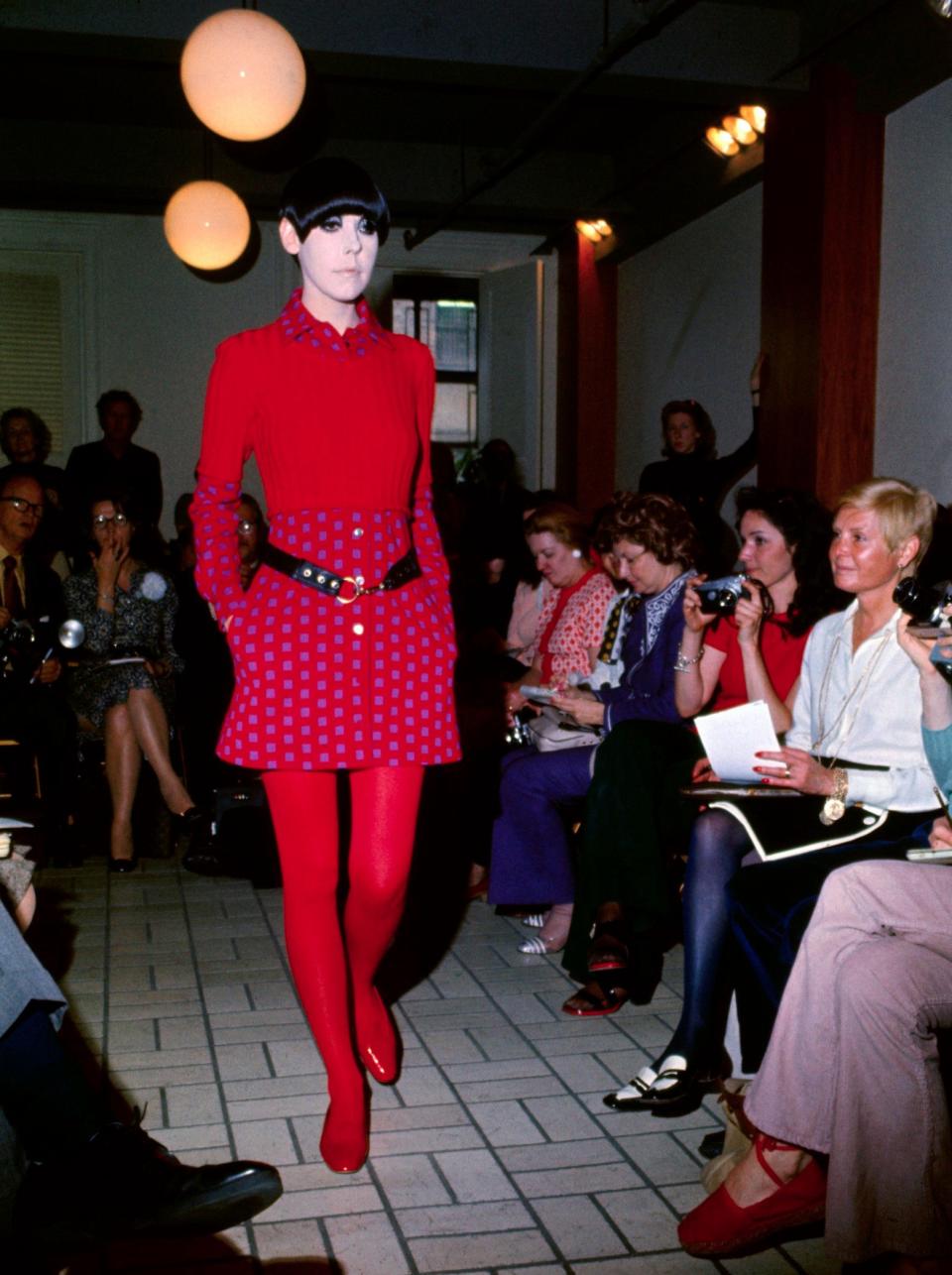

At times, her relationship with Gernreich was symbiotic. He would design a Pierrot-style collection and she would paint her face like a clown to match. While he was working on the Asia collection, she was halfway around the world, unaware of his plans, experimenting with Kabuki-like mask makeup. She would do up a black skullcap with feathers and bleach her eyebrows to give her face a deadly look. “Rudi and I were provoking each other… feeding off each other,” she recalls.
Later in life, she continued to defend her clothes, wearing them in most public appearances, including minidresses adorned with large flowers, window treatments, and vinyl strips. Her moon-like paleness, combined with her heavily fringed eye makeup and signature Vidal Sassoon asymmetrical haircut—”Sassoon is to hair what Picasso is to painting,” she once said—made her one of the most recognizable figures in fashion.
But she became disillusioned with the industry as a whole and declared it “dead” except for “dreamy situations” on the red carpet. Away from the party scene, she would probably be found in her garden, wearing jeans and a sweatshirt.
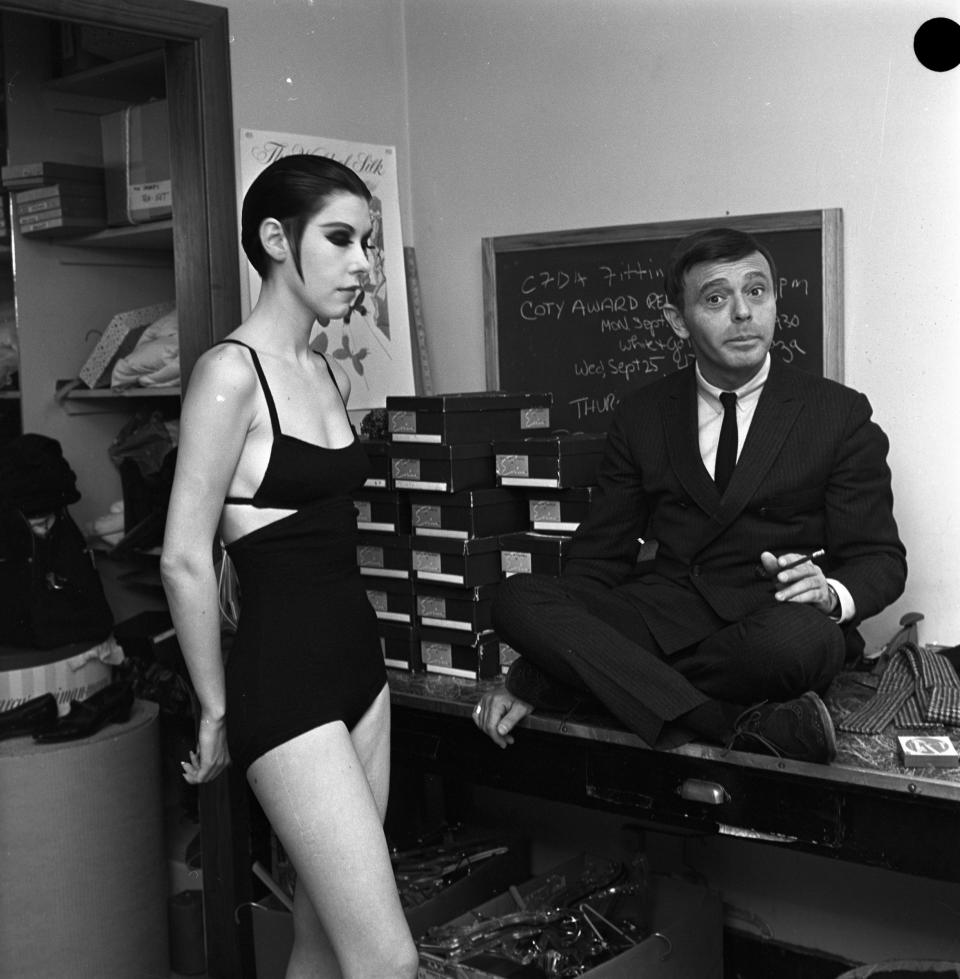

Born Margaret Anne Moffitt in Los Angeles on May 14, 1940, her father, Jack Moffitt, was a screenwriter and film critic. She had a comfortable childhood and attended the elite Marlborough Girls’ School.
As a teenager, she worked an after-school job at Jax, an avant-garde boutique in Beverly Hills popular with the likes of Joan Collins and Audrey Hepburn. It was there that she first met Rudi Gernreich, a well-known designer in his mid-thirties, and became fascinated by his clothes—though at the time, Gernreich thought she was too young to model for him.
Instead, she went to New York for two years to study theater and ballet at the Neighborhood Playhouse. When she returned to Hollywood, she landed several small roles in films such as Girls Town (1959) and the Korean war film Battle Flame (1959).
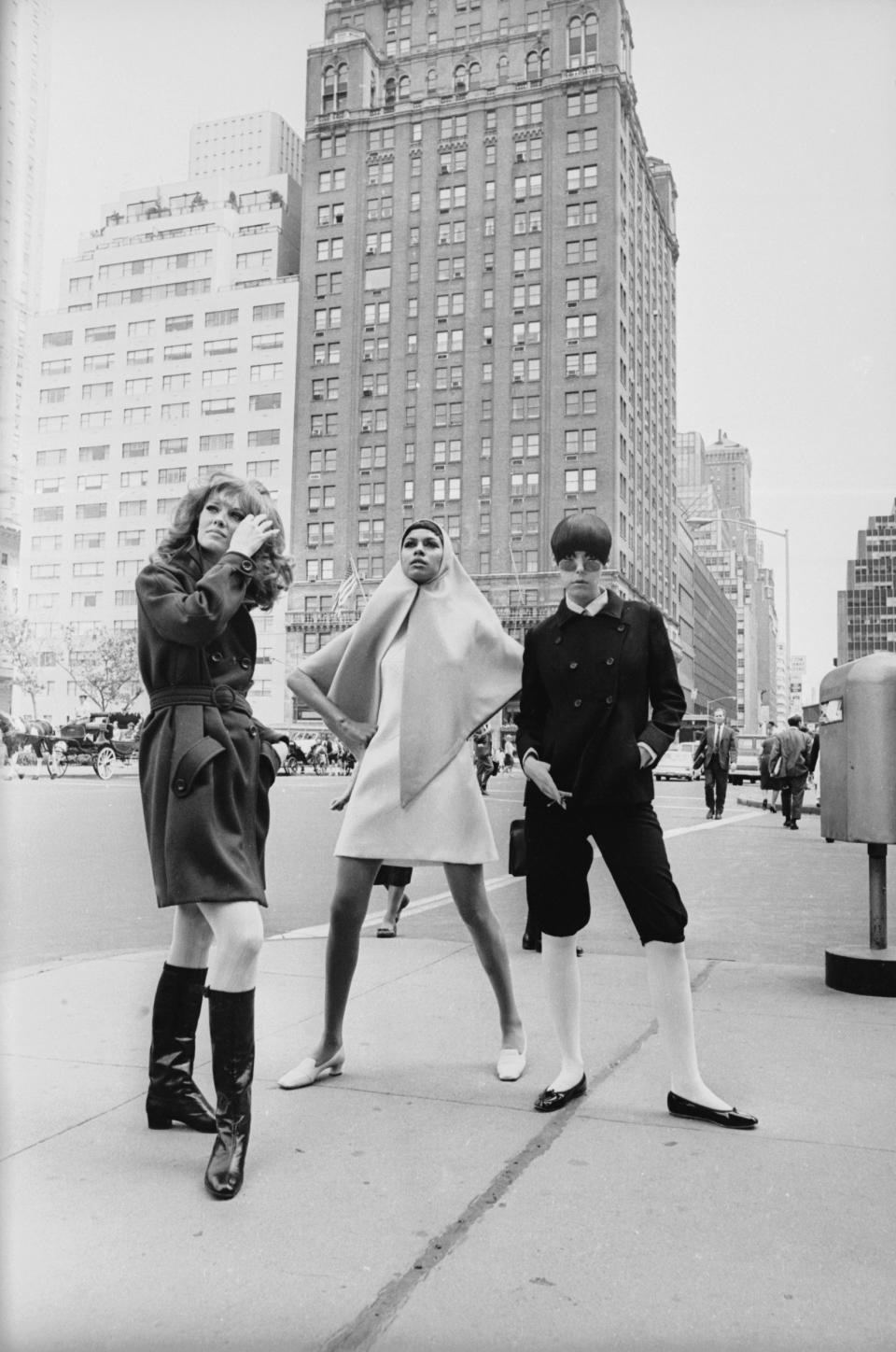

The first of what would become a career-defining relationship began when jazz photographer Bill Claxton came to photograph his then-boyfriend for a magazine called Eve. The trio spent the next 16 hours together, and it was only a few months before Bill proposed. Gernreich attended the wedding, and soon after, the designer collaborated with the couple on a series of fashion photographs.
Gernreich took the identifying photograph of Peggy Moffitt in Claxton’s living room, standing on a bath mat. Life magazine initially refused to publish the photograph, with the editor reportedly telling Claxton that “bare breasts are only allowed if the woman is an aboriginal.”
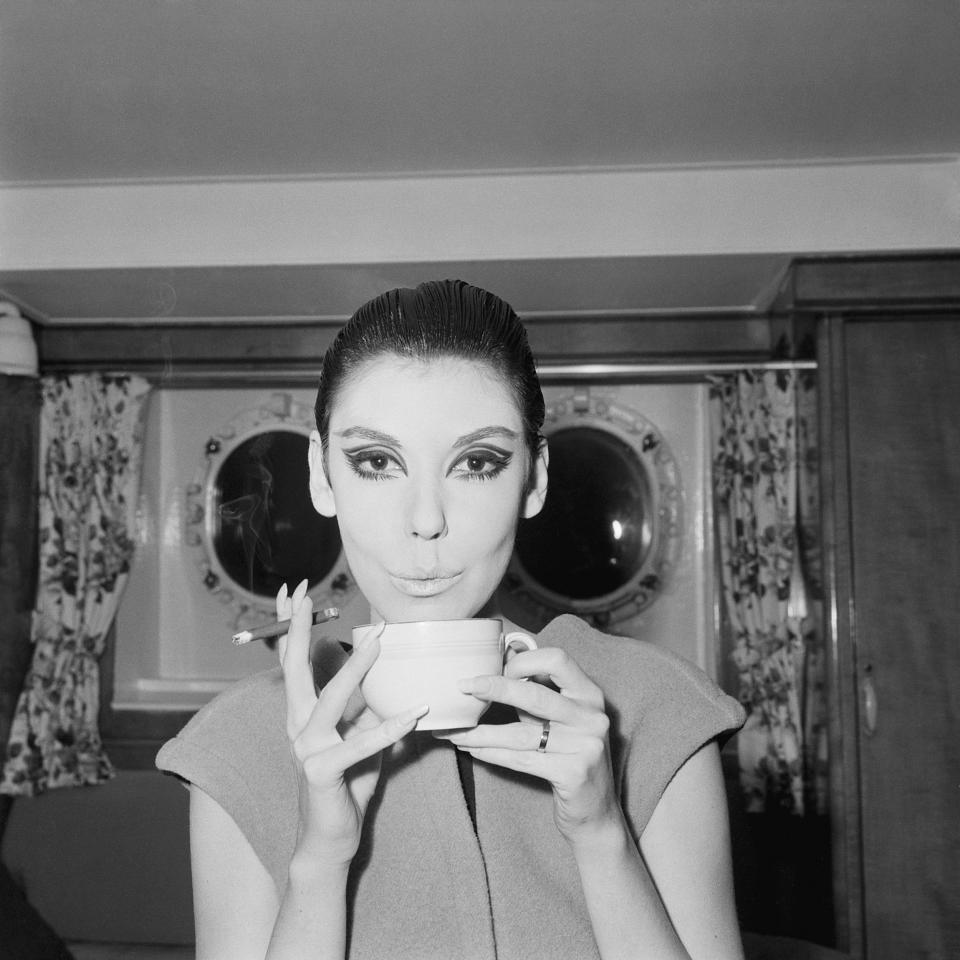

The trio reshot the photo with Peggy Moffitt’s arms covering her breasts, but Peggy Moffitt was unhappy with the result, as it meant “putting up with all that prudish, flirty stuff, like a Playboy bunny.” Playboy had originally offered her $17,000 (more than a year’s salary) to print the topless photo, but Peggy called the offer “preposterous.”
In later years she was photographed by Richard Avedon wearing Rudi Gernreich’s “braless bra”, an alternative to the rigidly structured assemblies of the period. She accompanied the designer to England to receive the Sunday Times’ international fashion award, and remained there for a year, dividing her time between London and Paris.
She had a small role in Michelangelo Antonioni’s cult film Blow-Up and played a model in Who Are You, Polly Magoo? (both 1966). Barry Lategan, the photographer responsible for launching Twiggy’s career, shot the two together, with Peggy Moffitt holding the young model’s head.
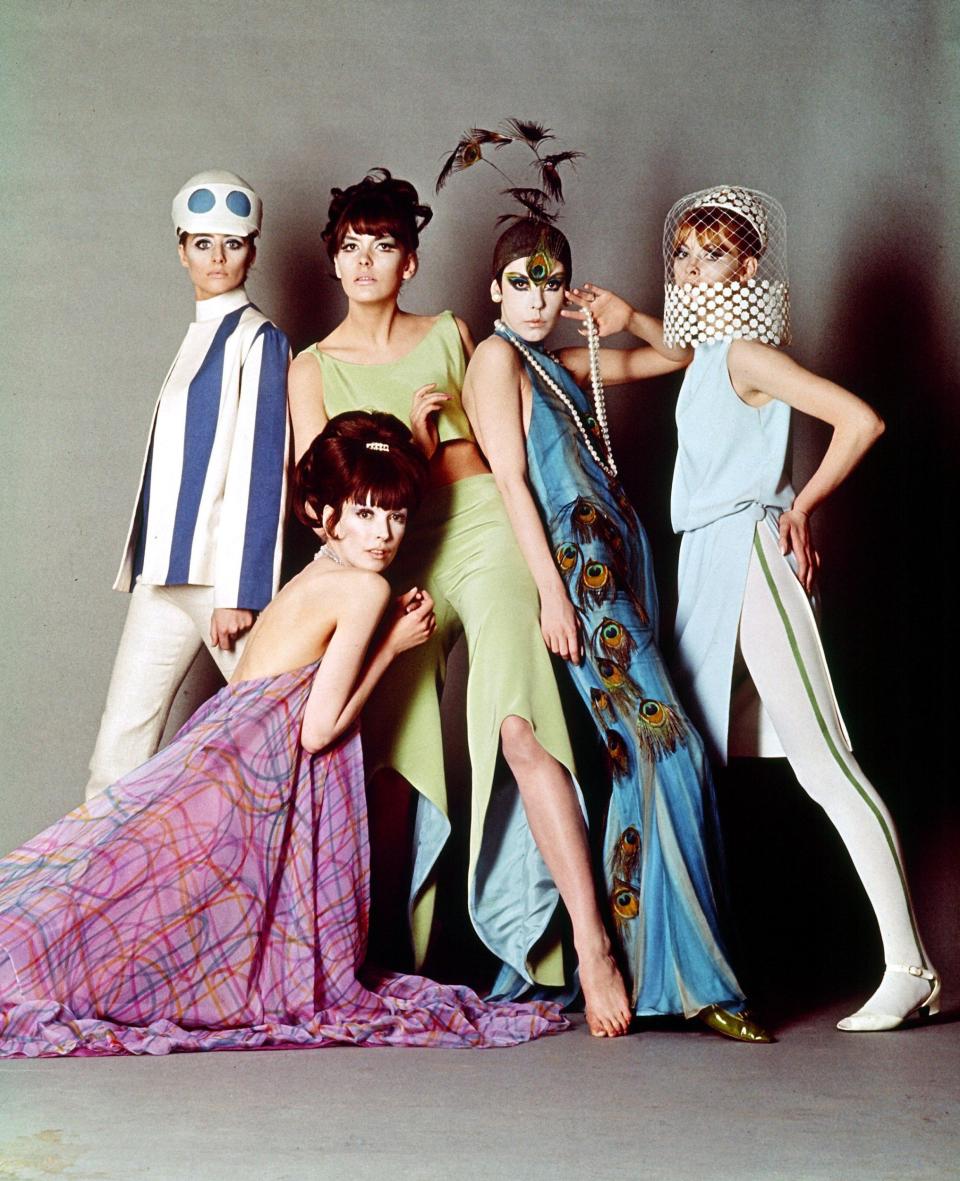

After returning to the United States, Peggy Moffitt starred in Vidal Sassoon’s promotional film Basic Black (1967) (shot by Claxton), in which she got the haircut she would wear for the rest of her life. Basic Black is now considered one of the first fashion videos ever made.
In December of that year, she appeared on the cover of Time magazine with Gernreich and fellow model Leon Bing. The two women were both her champions and her closest critics, Gernreich telling an interviewer: “I only work with models that I love and respect, and their reactions are extremely important to me.”
But by the end of the decade, their fates had become so intertwined that Peggy Moffitt had grown weary of the relationship, complaining: “I could wear a sack of flour and people would still think it was Gernreich.” She refused to shave her body or go to the “counter-statement” show in 1970, and in 1973 she retired from the fashion scene, returning to Los Angeles for the birth of her son.
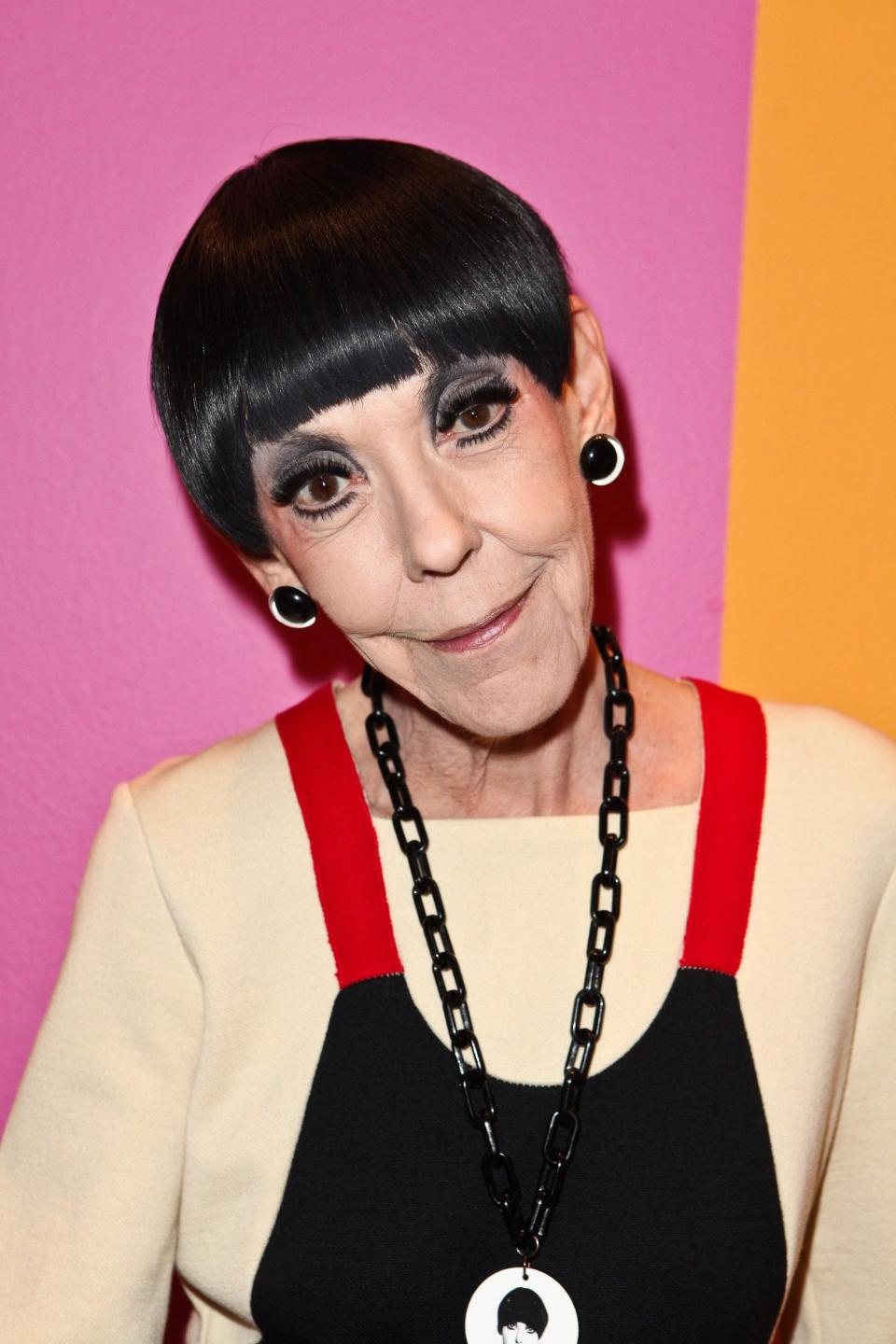

Gernreich had almost stopped designing by the time of his death in 1985, but the fashion world still recognized him as one of its most creative talents. In 1991, Peggy Moffitt and Bill Claxton published The Rudi Gernreich Book, a detailed photographic record of the various looks Gernreich created for him. Gernreich retained the legal rights to his designs and used them as inspiration for collaborations with Japanese designer Rei Kawakubo’s brand, Comme des Garçons, which included a wool “bikini” top.
In later life, Peggy Moffitt lived in the Hollywood Hills and decorated the white walls with photos from her modeling career and images taken by her husband, Bill. The wardrobe was full of Rudi Gernreich designs: jumpsuits, jackets, trousers and minidresses. There were ten trunks full of clothes in the warehouse.
Bill Claxton preceded her in death in 2008. The couple had a son named Christopher.
Peggy Moffitt was born on May 14, 1940 and died on August 10, 2024.